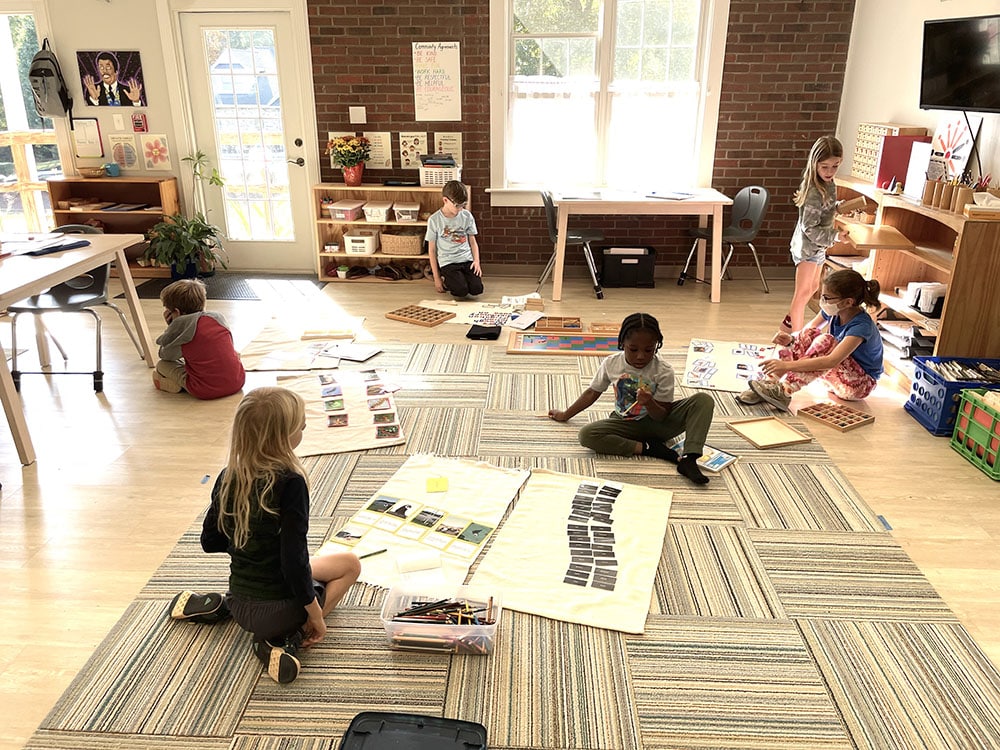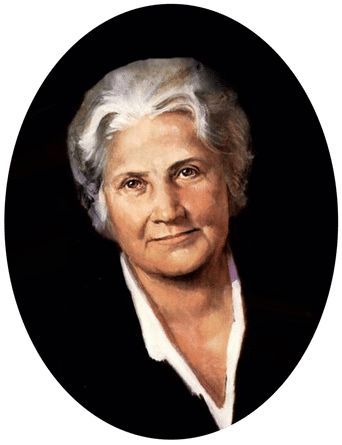The story of our school is the story of a heart-held vision for our students and the growth of a community.

Throughout the decades, Pinewoods has inspired curiosity, cultivated critical thinking, and empowered children to participate with confidence in their rapidly changing world. Our school story is tied to the vision of Maria Montessori, our founding staff and families, and our current educators, students, and community.
About the Montessori Method of Education
The Montessori method is based on careful observation, tactile learning materials and attention to intrinsic motivation.
“The hand is the instrument of intelligence. The child needs to manipulate objects and to gain experience by touching and handling.”
– The 1946 London Lectures
Within each classroom, multiple grades or ages of students are combined, creating a multi-age setting where students are mentored and lead peers. These environments are organized with attention to the developmental level of the class and instruction is tailored to the individual interest and ability of each child.
“In the child is much knowledge, much wisdom. If we do not profit from it, it is only because of neglect on our part to become humble and to see the wonder of this soul and learn what the child can teach."
– The Theosophist

Dr. Maria Montessori
Dr. Maria Montessori (1870-1952) was an Italian physician and anthropologist who devoted her life to understanding how children develop socially, cognitively, physically, and spiritually. Through careful observation of children, she identified universal patterns of development.
She opened the first Montessori school, the Casa dei Bambini, or Children’s House, in Rome on January 6, 1907. There, she witnessed the importance of a positive, nurturing environment that responds to the developmental needs of the child. As she observed the children and their response to the environment, she saw them demonstrate capabilities and interests that exceeded her expectations.
Using scientific observation and experience gained from her earlier work with young children, Montessori designed learning materials and a classroom environment that fostered the children’s natural desire to learn and provided freedom for them to choose their own materials. The set of materials used in the modern Montessori environment were designed by Dr. Maria Montessori and her associates, over a period of many years. They create a concrete, physical representation of the concepts and skills that children are naturally motivated to learn and are required for enhanced development.
By 1910, Montessori schools could be found throughout Western Europe and were being established around the world, including in the United States where the first Montessori school opened in Tarrytown, NY, in 1911. Maria Montessori traveled the world and wrote extensively about her approach to education, attracting many devotees. There are now thousands of Montessori schools in countries worldwide.
As a public figure, Montessori campaigned vigorously on behalf of women’s rights and the rights of children. Maria Montessori was a visionary, not easily daunted by the many challenges she faced during her career. She was recognized for her efforts by educators, psychologists, and political leaders of the day. Her associates included well-recognized intellectual and cultural leaders, Anna Freud, Erik Erikson, Mahatma Gandhi, Alexander Graham Bell and Jean Piaget.
Dr. Montessori was nominated for the Nobel Peace Prize in 1949, 1950 and 1951 and continued working, teaching, and writing up to the time of her death. Over more than one hundred years children throughout the world have benefited from this educational approach that supports, nurtures, and honors child development. Maria Montessori’s legacy lives on at Pinewoods in the hands of our exceptional educators and in the hearts, minds, and spirits of our students.

